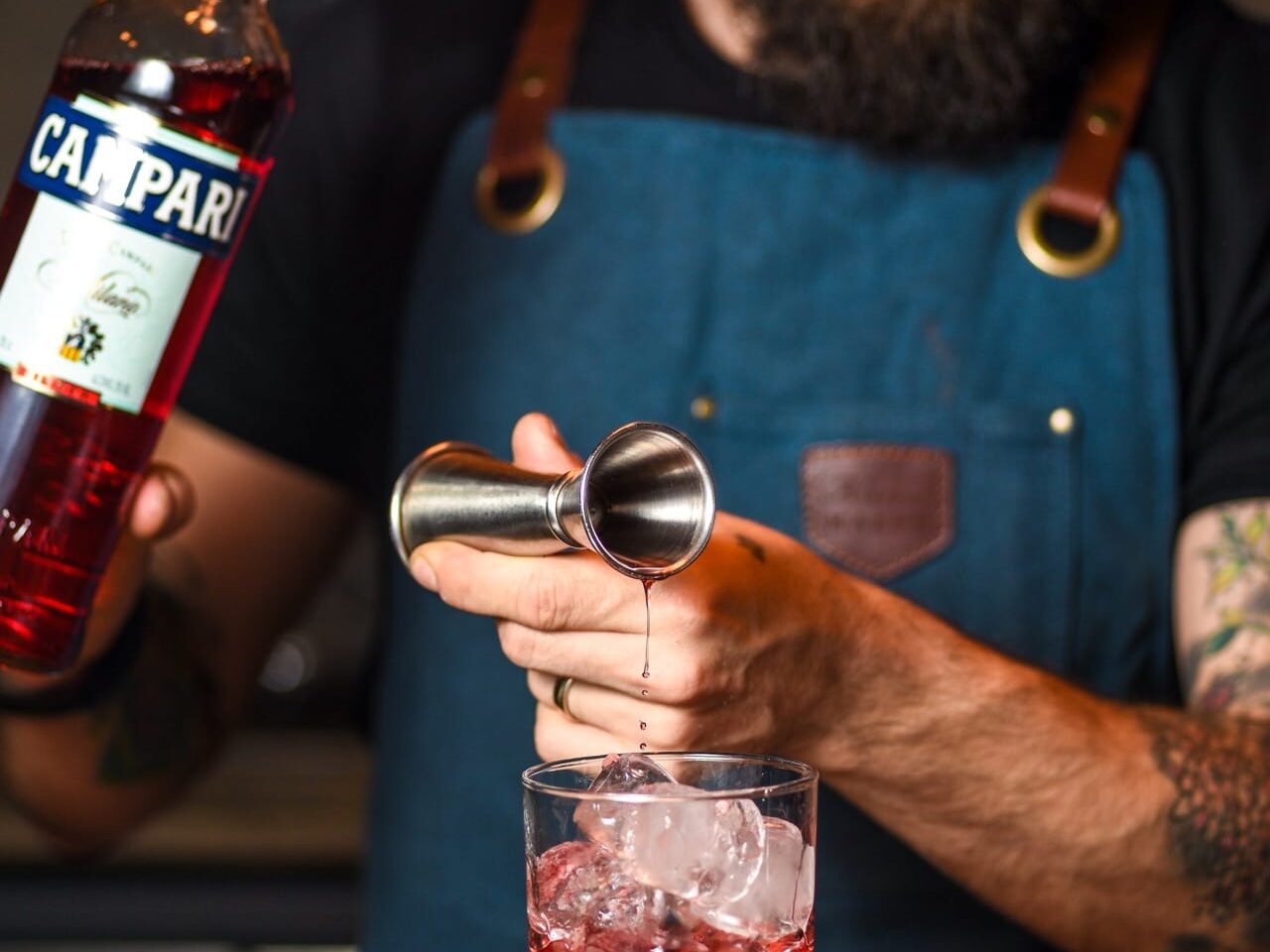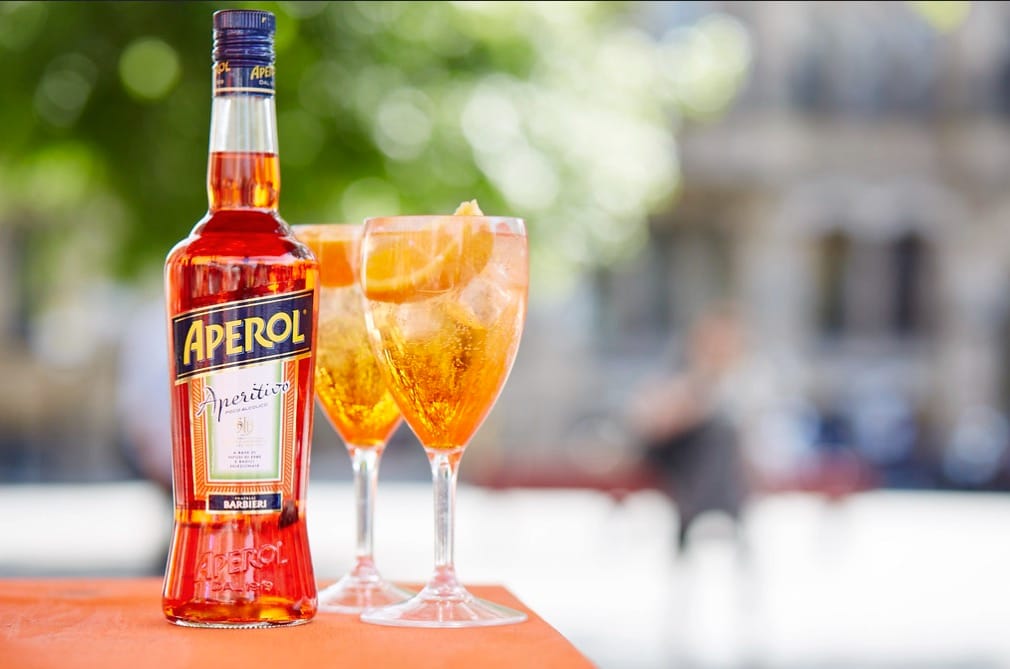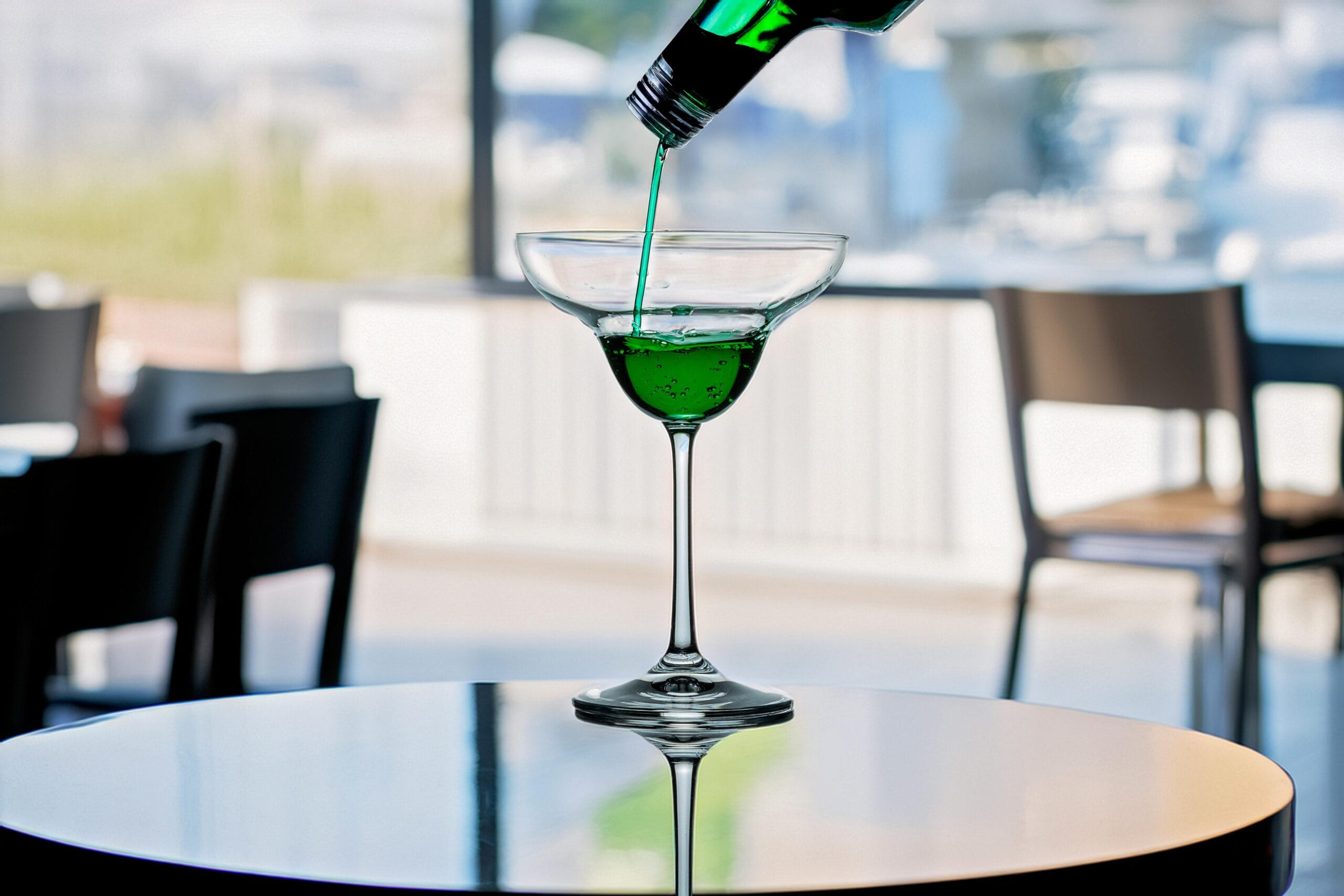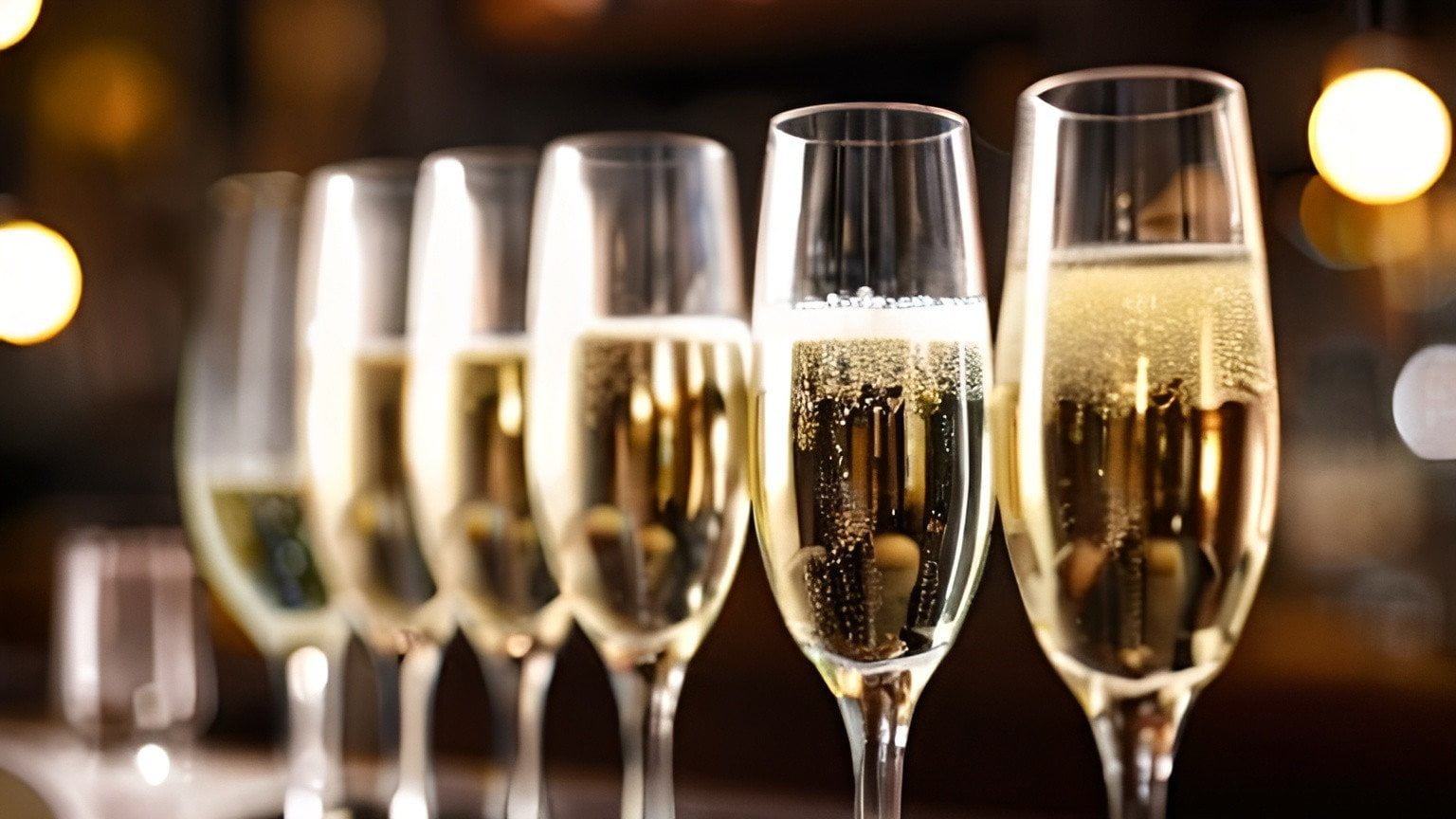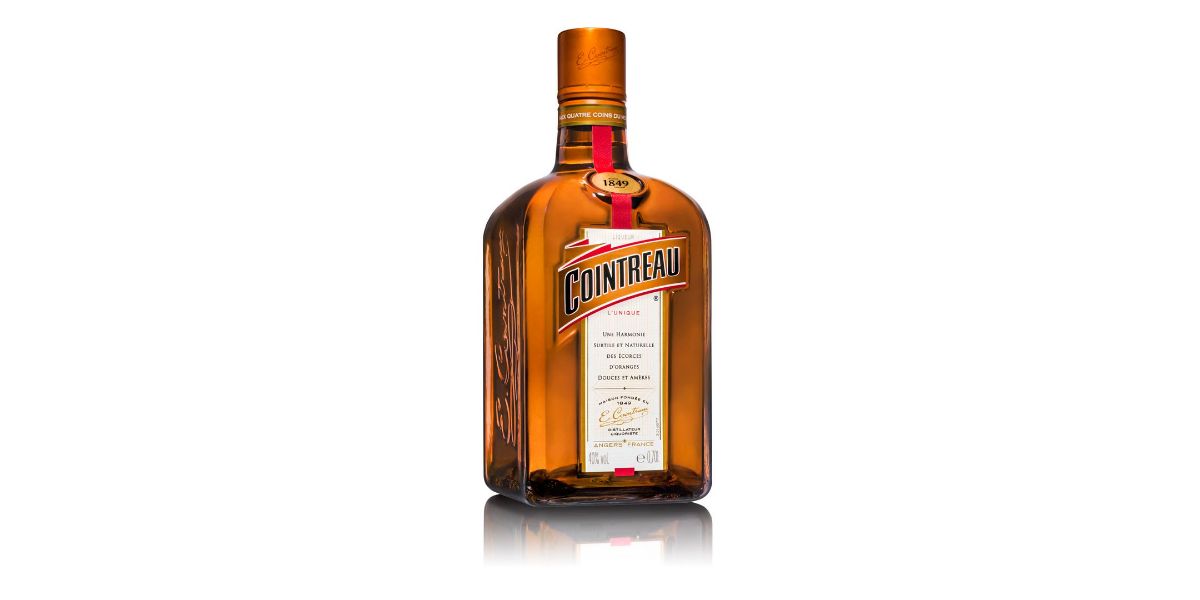Are you ready to discover one of the most distinctive spirits in the world? Campari stands out on any bar shelf with its brilliant red color and complex flavor profile.
This guide takes you through everything you need to know about this iconic Italian aperitif.
What is Campari?
Campari is a bright red Italian bitter liqueur that serves as the backbone of classic cocktails like the Negroni and Americano. Made from a secret blend of herbs, aromatic plants, fruit, and alcohol, Campari delivers a distinctive bitter taste that has become essential in cocktail culture worldwide.
With an alcohol content of 20.5% to 28.5% ABV depending on the market, Campari sits firmly in the aperitif category – drinks meant to stimulate the appetite before meals.
The History of Campari
Campari was born in 1860 when Gaspare Campari created his distinctive red bitter in Novara, Italy. As the owner of a café, Gaspare experimented with herbs, fruits, and spices to develop his signature concoction.
The brand gained prominence when Gaspare’s son, Davide Campari, took over. He opened the Camparino bar in Milan’s Galleria Vittorio Emanuele II in 1915, which became a hotspot for artists and intellectuals.
Key moments in Campari history:
- 1860: Gaspare Campari creates the original formula
- 1904: The first Campari production plant opens in Sesto San Giovanni
- 1915: Camparino bar opens in Milan
- 1920s: Campari begins international expansion
- 1932: The iconic Campari Soda bottle designed by Fortunato Depero debuts
- 2010s: Campari Group becomes a global spirits giant with multiple brands
The original recipe remains a closely guarded secret known to very few people. For many years, Campari got its distinctive red color from carmine dye (derived from cochineal insects), but in 2006, the company switched to artificial coloring.
Campari Flavor Profile
Campari presents a complex taste experience that might surprise first-time drinkers:
- First impression: Intensely bitter
- Mid-palate: Herbal notes with hints of orange and cherry
- Finish: Long, dry, and bitter
The flavor combines bitter herbs, aromatic plants, and fruit in a balanced but bold profile. People often describe Campari as:
- Bitter
- Herbal
- Citrusy
- Spicy
- Sweet (subtly)
First-time Campari drinkers might find the bitterness overwhelming. Start with Campari-based cocktails that balance the bitterness with other ingredients before trying it neat or on the rocks.
Regional Traditions and Cultural Significance
Campari represents Italian aperitivo culture – the tradition of pre-dinner drinks and small bites that prepare the palate for a meal.
Italy
In Italy, Campari forms the core of the aperitivo ritual. Italians often enjoy it:
- With soda water and an orange slice
- In an Americano (with sweet vermouth and soda)
- In a Negroni (with gin and sweet vermouth)
The aperitivo hour remains an essential social custom throughout Italy, with Campari as a starring player.
Global Presence
Campari has spread worldwide, with different regions embracing it in unique ways:
- United States: Craft cocktail bars feature Campari in both classic and innovative drinks
- Australia: Growing popularity in spritz-style drinks
- Brazil: One of the largest Campari markets outside Italy
- Argentina: Often paired with local food during pre-dinner hours
Bartenders worldwide respect Campari for its distinctive character and versatility in cocktails.
How to Taste Campari
To properly taste Campari and understand its complex profile:
- Pour a small amount (1/2 oz) in a tasting glass
- Observe the vibrant red color
- Smell the aroma – notice the herbal and citrus notes
- Take a small sip and let it coat your tongue
- Note how the flavor changes from the first taste to the finish
Quality indicators for Campari include:
- Balanced bitterness (present but not overwhelming)
- Complex flavor progression
- Clear, bright red color
- Proper viscosity – not too thick or thin
For beginners, try Campari in progressively stronger formats:
- Start with a Campari Spritz (Campari, prosecco, soda)
- Move to an Americano (Campari, sweet vermouth, soda)
- Try a Negroni (Campari, gin, sweet vermouth)
- Sample Campari with just soda water
- Finally, taste Campari neat or on ice
Buying Guide for Campari
When purchasing Campari, keep these points in mind:
What to Look For
- Authentic Campari comes in distinctive bottles with the proper labeling
- Check the ABV content – it varies by country (20.5%-28.5%)
- Ensure the seal is intact
Price Points
- 750ml bottle: $25-35 in the US
- 1L bottle: $30-45 in the US
- Mini bottles (50-200ml): $5-15
Campari maintains consistent quality worldwide since it’s produced by a single company. Unlike craft spirits, there aren’t different “quality tiers” of Campari – it’s the same product globally with minor regional variations in alcohol content.
Value Recommendations
- Best value: 1L bottle for home bars that use Campari regularly
- For occasional use: 750ml bottle
- For gift giving: Look for gift sets that include proper glassware
Is Campari worth the price? For cocktail enthusiasts, yes. No substitute delivers the exact same flavor profile needed for classic drinks like the Negroni.
Classic Campari Cocktails
These signature cocktails showcase Campari’s unique characteristics:
Negroni
- 1 oz Campari
- 1 oz gin
- 1 oz sweet vermouth
- Orange peel garnish
Stir with ice and strain into a rocks glass with fresh ice. Garnish with orange peel.
Americano
- 1 1/2 oz Campari
- 1 1/2 oz sweet vermouth
- Soda water
- Orange slice garnish
Build in a highball glass with ice, top with soda water, and garnish with orange.
Campari Spritz
- 2 oz Campari
- 3 oz prosecco
- 1 oz soda water
- Orange slice garnish
Build in a wine glass with ice and garnish with orange.
Boulevardier
- 1 oz Campari
- 1 1/2 oz bourbon or rye whiskey
- 1 oz sweet vermouth
- Orange peel garnish
Stir with ice and strain into a coupe or rocks glass. Garnish with orange peel.
Garibaldi
- 1 1/2 oz Campari
- 4 oz freshly squeezed orange juice
- Orange slice garnish
Build in a highball glass with ice and garnish with orange.
Modern Campari Applications
Today’s bartenders continue to create new ways to use Campari:
- Campari is featured in frozen drinks like the Frozen Negroni
- Culinary applications include Campari-based sorbets and desserts
- Some craft cocktail bars infuse Campari with additional flavors
- Low-ABV cocktail trends highlight Campari’s complexity without high alcohol content
Storing Campari
To maintain Campari’s quality:
- Keep bottles in a cool, dark place
- No need for refrigeration, but you can chill before serving
- Once opened, consume within 1-2 years for best flavor
- Avoid direct sunlight, which can fade the color
Campari Alternatives
Can’t find Campari or looking for something similar? Try these alternatives:
- Aperol: Less bitter, more orange-forward (great for those new to bitter liqueurs)
- Select Aperitivo: Similar bitter profile with more vanilla notes
- Gran Classico: Swiss bitter with more herbal complexity
- Leopold Bros. Aperitivo: American-made with natural ingredients
None perfectly replicate Campari’s unique profile, but they work in similar cocktail applications.
Final Thoughts on Campari
Campari remains one of the most distinctive spirits in the world, with a flavor profile that stands out in any drink. Its bitter, complex character creates balance in cocktails and stimulates the appetite as a true aperitif should.
Whether you’re new to Campari or a longtime fan, exploring its range of cocktail applications rewards you with a deeper appreciation of this iconic Italian bitter.
Want to elevate your home bar? A bottle of Campari opens the door to dozens of classic and modern cocktails that have stood the test of time.
What will your first (or next) Campari cocktail be?







